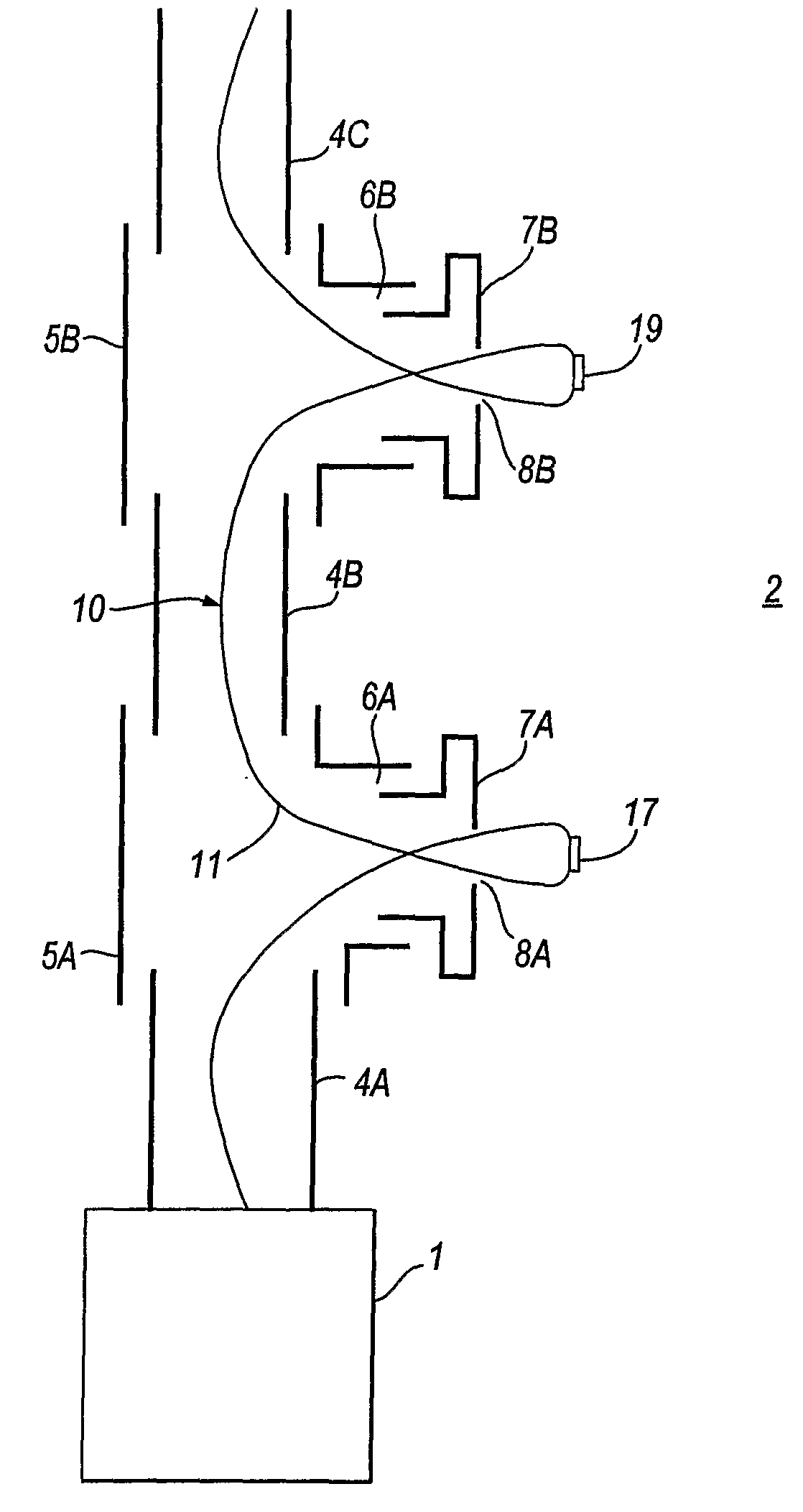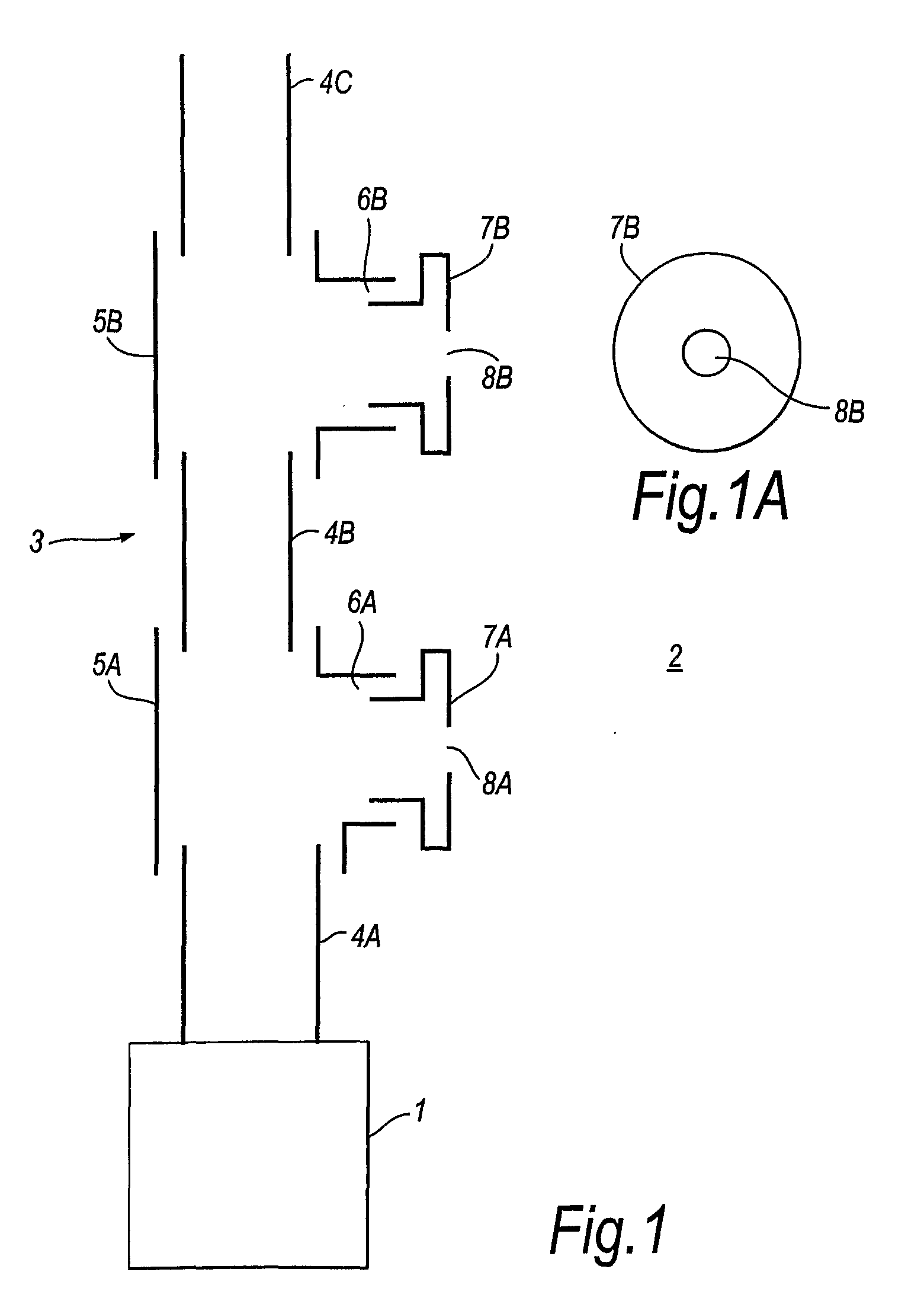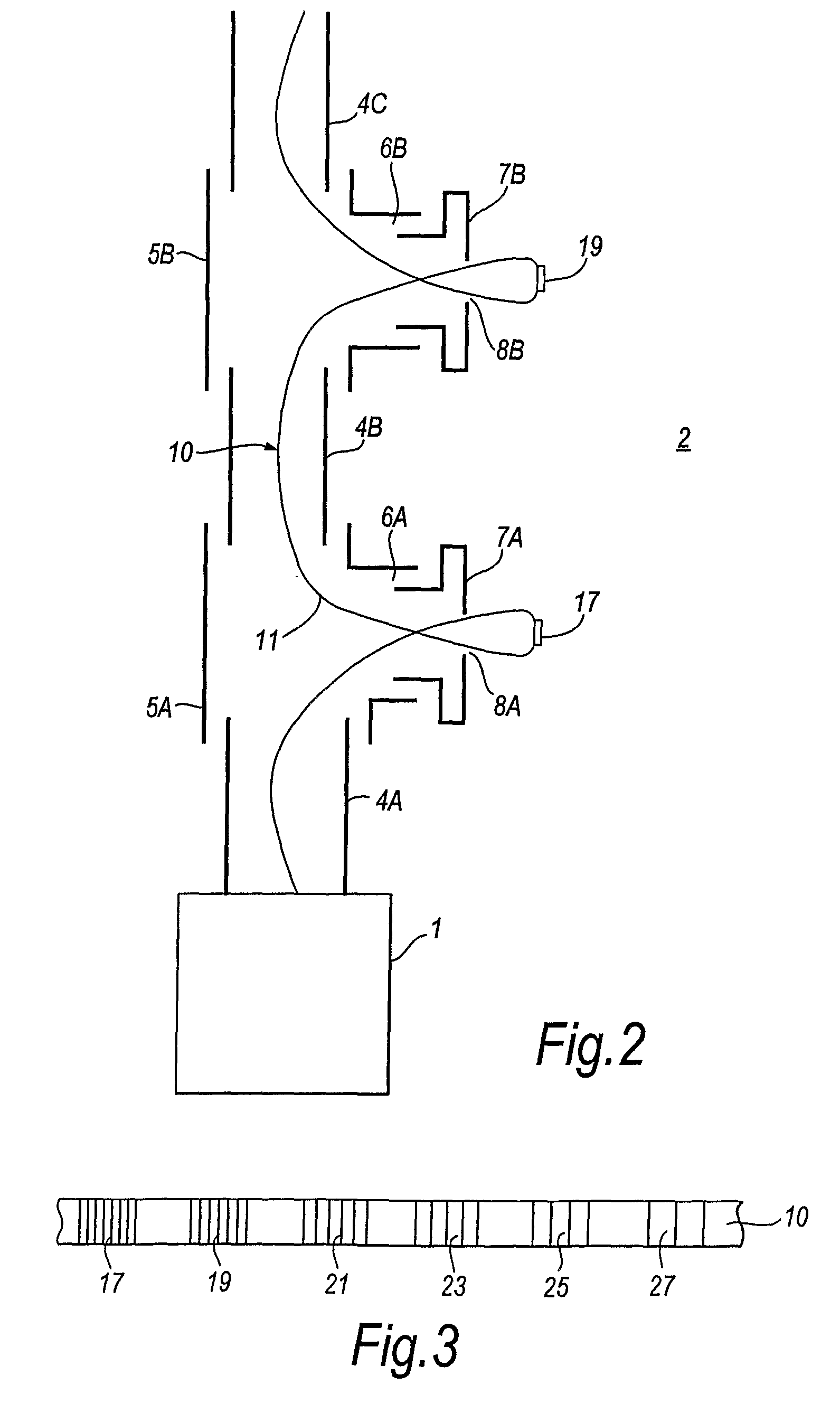Fire detection
a fire detection and detection system technology, applied in the field of fire detection systems and methods, can solve problems such as the inability to indicate the likely location of fires
- Summary
- Abstract
- Description
- Claims
- Application Information
AI Technical Summary
Benefits of technology
Problems solved by technology
Method used
Image
Examples
Embodiment Construction
[0030]The smoke detection system of a generally known type shown in FIG. 1 comprises a smoke detector 1. For example, the smoke detector 1 may be a HART High Sensitivity Smoke Detection system available from Kidde Plc, which uses laser based technology to count particles of smoke in a gas for detecting a fire. The smoke detector 1 provides fire detection for a volume 2 containing air (although this could be some other fluid). A conduit 3 receives air from the volume 2. Typically, the volume 2 will be an enclosed space, such as a large warehouse storing electrical equipment or documents. Conduit 3 will be mounted near to the ceiling of the volume 2, and may comprise a plurality of connected pipes—for example, an array of pipes mounted on the ceiling or extending around the periphery of the ceiling. FIG. 1 shows one such pipe, comprising respective tubular pipe parts 4A,4B and 4C. Opposite ends of pipe parts 4A and 4B are coupled together by pipe coupling 5A. Pipe parts 4B and 4C are ...
PUM
 Login to View More
Login to View More Abstract
Description
Claims
Application Information
 Login to View More
Login to View More - R&D
- Intellectual Property
- Life Sciences
- Materials
- Tech Scout
- Unparalleled Data Quality
- Higher Quality Content
- 60% Fewer Hallucinations
Browse by: Latest US Patents, China's latest patents, Technical Efficacy Thesaurus, Application Domain, Technology Topic, Popular Technical Reports.
© 2025 PatSnap. All rights reserved.Legal|Privacy policy|Modern Slavery Act Transparency Statement|Sitemap|About US| Contact US: help@patsnap.com



